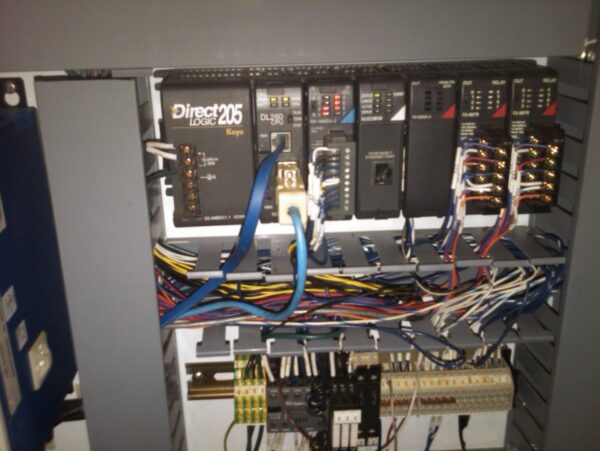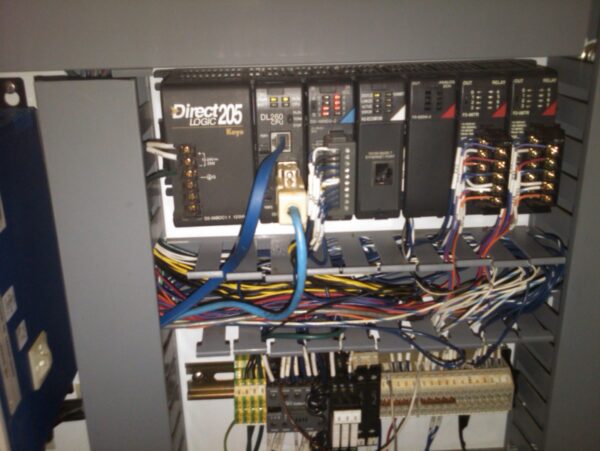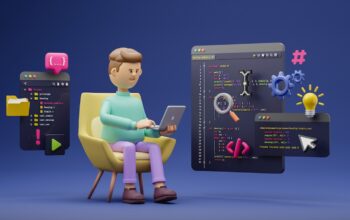
If you wish to learn about PLC programming, you should have in mind that it is one of the most useful languages because it depends on the visual perspective and realization. The most popular language is called a ladder diagram or ladder logic, and it is easy to understand.
The best thing about ladder logic is that looks similar as electrical relay circuits, so if you are an engineer that wants to enter the world of programming, you can rest assured because you will be able to learn it in a matter of days.
The main idea was to replace common relays used in automated industry with PLCs and programming languages that used similar signs and methodology so that the transition could be as fast as possible and effortless for people that worked in these industries.
We recommend you to check PLCs for dummies so that you can learn necessary information that will help you understand what programmable logic controllers are and why they are essential for the automated industry in overall.
We have created this particular tutorial so that you can learn everything you wish to know about the ladder diagram so that you can use it for PLC afterward. You can quickly start to make first and real programs in it by using programming software that you can find online.
What is Ladder Logic?
Have in mind that ladder logic is a programming language for programmable logic controllers, and even though some people tend to call it to ladder diagram, the common name is ladder logic. The main reason for this particular name is that it is made out of rungs that resemble ladders.
Ladder logic is primarily made for conducting logic operations, but it is not the only language made for PLC. However, it is standard among programmers across the world, which means that there are no other reasons to use other languages instead.
Introduction to Ladder Logic
If you wish to understand the basic concept of ladder logic, you should start from the very beginning and brief introduction that we are going to make such as its history and the reasons for its invention.
That will be especially important for you if you have prior experience with electrical relays and circuits or if you understand the idea of Boolean logic. Click here to learn more on Boolean logic and everything you should know about it.
- Perfect for Technicians – Ladder logic is a visual programming language, which means that it uses graphic elements instead of text that you have to combine so that you can deal with a specific These graphics are also called symbols, and the best thing about them is that they look the same as electrical symbols. Therefore, we can easily say that ladder logic was created and used by technicians, people with electrical background and electricians, especially ones that understand and used to deal with electrical schematics and diagrams. Similarly as electrical schematics, ladder logic features symbols for relays and contacts that are called coils. These symbols can be slightly different from ones you will find in electrical schematics, but they have the same function, and that is the main benefit you will get with this particular programming language.
How to Read Ladder Logic
Another significant difference between electrical schematics and ladder logic diagrams is the way they are drawn. When it comes to electrical schematics, they are drawn horizontally, while ladder logic vertically. The best way to explain ladder logic vertical is by checking these reasons:
- Simple to Read – The main reason why ladder logic is simple to read is that it is natural for the eye to go from left to right and the next line, similarly as you do when you are reading the text. However, this applies only to people that read from left to right.
- Draw On Computer – When you decide to draw ladder logic on a computer, you will have to make one line at a time. As you pull more, you will create rungs that will stack on top of each other, and the picture will resemble ladders. The best way to look at the ladder diagram is vertically throughout the screen.
- Order of Execution – The main benefit and reason why ladder logic is horizontal is due to order of execution. Have in mind that this particular principle is determining how PLC will run the program based on the operation you implemented. That way, you will be able to create order in which PLC will operate and execute operations. It is important to remember that PLC will always start at the top of the ladder logic and execute it while going down.
Relay Ladder Logic
Similarly, as we have mentioned above, ladder diagrams tend to resemble electrical schematics, but most people tend to draw ladder logic vertically and to build everything based on electrical schematics. However, you should have in mind that there are differences and you should divide these two perspectives.
The main reason why you should avoid vertical implementation is that electrical control systems and programmable logic controllers are working differently:
- PLC takes one ladder logic line with the idea to execute it, and it reaches the next one afterward.
- Electrical systems can execute multiple lines and current pathways at the same time.
Check this website: https://www.techopedia.com/definition/20292/ladder-logic so that you can learn more on ladder logic and its efficiency.
Ladder Logic Basics
The first thing that you should know when you decide to create a ladder logic program is two vertical lines, and in between, you will find a space where ladder logic starts.
As soon as you start drawing, the idea is to create vertical connections between these lines and each of those are called rung, similarly as on ladders. You will be able to place any ladder logic symbol in these rungs so that you can create appropriate logic based on your preferences.
The idea is to determine the order of execution so that you can know in which way it will happen. It is vital to understand and be familiar with PLC scan cycle or scan time, and that is the first scan that will execute program toward outputs.



